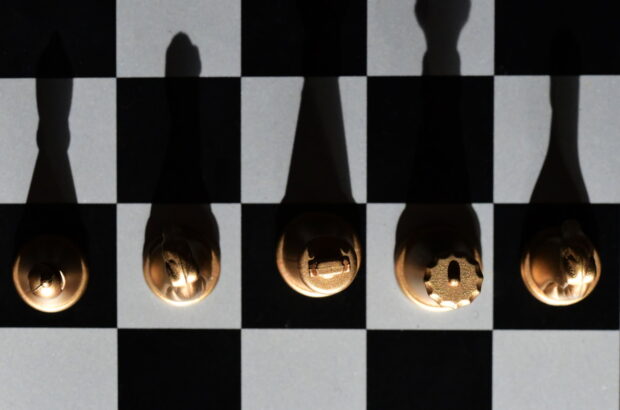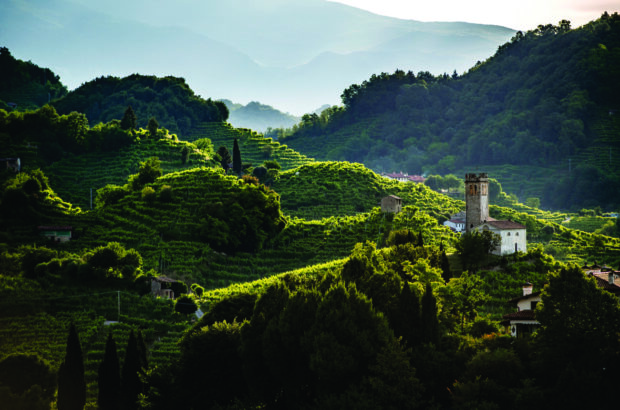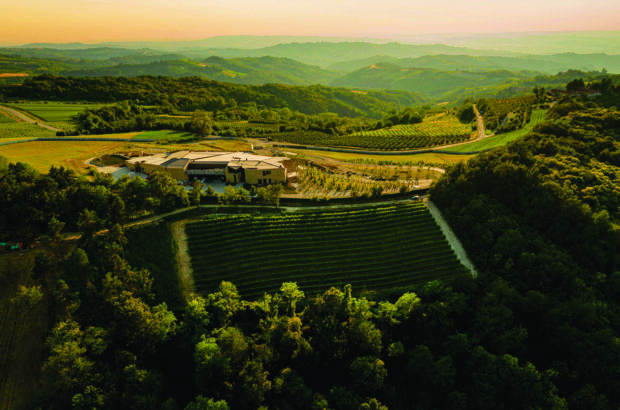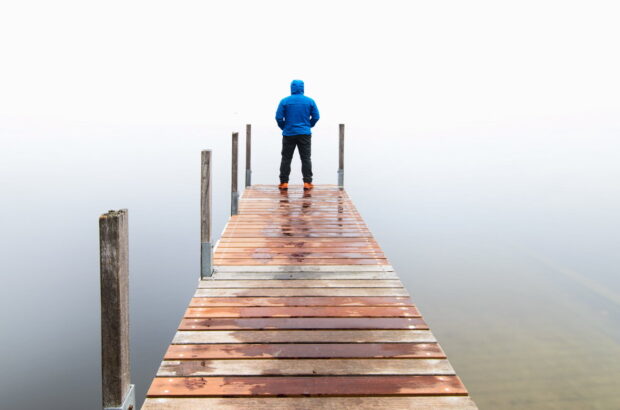Visiting the Loire Valley? ALAN SPENCER has the low down on where to go and what to see.
It’s not without reason that UNESCO has recently designated the Loire Valley a world heritage site, the first time a whole region has been awarded this distinction. The area has long drawn visitors. For centuries the French royal family and aristocracy sailed down from Paris to the stately homes they had built for themselves beside the Loire and its tributaries and, indeed, today the Valley’s magnificent châteaux are among the most popular tourist attractions in France.
The Loire area is France’s third greatest fine wine region (after Bordeaux and Burgundy) and as well as making an ideal building material for manor houses, the soft tufa rock provides an excellent terroir for winegrowing. The caves formed by quarrying the rock have been, and in some cases still are, used as dwellings, but they also make good mushroom beds and excellent ageing cellars for the wines. On the banks of the Loire, France’s longest river, the climate, too, undergoes a subtle transition that makes it especially favourable for the vine.
If you are setting out to tour the Wine Route, you will find that along the way, to guide you at junctions, signposts are marked ‘Route des Vignobles’ and feature a bunch of grapes and a vine leaf in the colour for that appellation area. These symbols correspond to different itineraries and maps contained in one of two handy, pocket-sized guides available under the same name, which should be used in
conjunction with each other. The first contains maps for each area; the second a list of 621 wine producers – ranging from small, family vineyards to large-scale operations and local cooperatives – and an index of those villages which display boards listing the producers in the commune, along with symbols indicating whether they speak English or not and if an appointment is needed. Most domaines are open daily from 9am to 6pm or even 8pm, although they close for lunch between 12pm and 2pm and not all are open on Sundays. Larger producers and cooperatives have dedicated staff to welcome visitors, whereas smallholders work the vineyards and receive visitors when they can. However, talking directly to vintners or their families gives visits more authenticity than looking around with an official guide. In fact, a great many people speak English well enough to make themselves understood, conversation can be fun and at all events the wines speak for themselves.
Of course in addition to vineyards, the Wine Route also features numerous other attractions. Angers, for example, is a city of broad boulevards dominated by a semicircular 13th-century fortress. This remarkable specimen of feudal architecture is home to the famous Tapestry of the Apocalypse. This is also the site of the Cointreau distillery, where the family still lives.
The town of Saumur is famous for horse riding and is home to the Ecole Nationale d’Equitation (Cadre Noir), the French centre for dressage. Manure from the stables helps provide compost for the mushroom industry in nearby caves and mushroom museums have been set up at Saint-Hilaire-Saint Florent and Le Saut aux Loups (open from mid-February to mid-November, 10am to 7pm). A cave complex also houses the ancient trade of Troglo des Pommes Tapées, which involves hammering apples from the local orchards to preserve them. The Grande Vignolle next door is a true troglodyte city where only the facade and chimneys are visible from outside.
A few kilometres south in Saint-Cyr-en-Bourg is the Saumur Cooperative, whose new ultra-modern fermentation room (open daily 9.30am to 12pm and 2pm to 6pm) is well worth the detour. It also has ancient monolithic cellars dating back to the 12th century and the wines are excellent.
A few kilometres upriver from Saumur, the fishing village of Candes-Saint-Martin is considered to be one of the prettiest villages in the whole of France, with its narrow alleyways leading down from the abbatial church to the stone slipways on the river. The Plantagenet Fontevraud Abbey is undergoing total renovation but the 14-hectare monastic complex, the biggest in Europe, is open every day of the year. Many English visitors come to see the tombs of Henry II and Eleanor of Aquitaine, who spent their lives squabbling (remember The Lion in Winter?), alongside their favourite son Richard the Lionheart and Isabelle of Angoulême. The Prieuré Saint Lazare within the Abbey grounds, originally a leper hospital, has been admirably restored and converted into a top-class hotel and restaurant.
On the way to Chinon, following the Vienne through the village of Saint-Germain-sur-Vienne, you may see the boat builder by the roadside preparing a toue or foutreau, both types of traditional wooden fishing boat. Before you reach Chinon, a signpost points to La Devinière, the birthplace of Rabelais. Apart from the castle dominating the Vienne and its Joan of Arc Museum, Chinon is impregnated with the spirit of Rabelais.
The temple of la Dive Bouteille is the Caves Painctes (Painted Cellars) where the Bons Entonneurs Rabelaisiens meet. The Grand Maître of this all-male fraternity is a well-known local figure, Jacques Couly, whose family owns Clos de l’Echo, so called because an echo rebounds from the walls of the château below. So important is this family that one wag has suggested that if you cry ‘Chinon’ from the top of the slope, the echo will come back ‘Couly!’
The cellars of Couly-Dutheuil are open daily from April to September, with guided tours at 10am and 3pm.Making a slight detour through Crissay-sur-Manse, another of the prettiest villages in France, the Wine Route winds towards the mills and manors of the Indre and the remarkable stately home of Azay-le-Rideau. On the way, stop off in the village of Villaines-Les-Rochers, famous for wicker baskets, a cottage industry that goes back 150 years.
The wines of Chinon are reputed to smell of violets, whereas those in Bourgeuil and Saint Nicolas de Bourgeuil have a bouquet of raspberries. However, wine lovers prefer to note that wines grown on the gravelly soil by the river Loire or the Vienne are light, fruity and aromatic, whereas those grown on the tufa are more full-bodied and tannic, built for laying down. Vignoble de la Jarnoterie in Saint-Nicolas-de-Bourgeuil makes an interesting visit.
The cellars are carved out of the soft tufa rock and you drive in underneath the vineyards past side-galleries belonging to one of 80 vintners who own the corresponding vineyard above. Protruding from among the vines, you can see the chimneys which ventilate the cellars below.
On the way to Tours, the famous Jardins à la Française at Château Villandry, laid out with geometrical precision on three terraces, are a unique example of 16th-century French garden architecture. In Vouvray, the other side of Tours, the Wine Route winds back and forth in a zigzag, carefully following the better wine valleys north of the river towards Chaumont-sur-Loire, where it crosses the river. It then winds back through Montrichard, with its château dominating the town, via Chenonceaux, with its world-famous château straddling the Cher, into the Montlouis appellation south of Tours.
Where to stay and eat in the Loire Valley
Distances are not excessive in the Loire Valley, so Angers is only 90km from Nantes, 50km from Saumur and 110km from Tours.
One good way to get to know the area is by staying in a Chambre d’Hôte (bed and breakfast) with a vintner and his family. For details, contact Gîtes de France. Tel: +33 149 707 575.
If your tastes are more aristocratic, a number of chatelaines have turned their homes into personalised hotels. Candlelight dinner in the château with your hosts commenting on their wines can be unforgettable. Among those offering this experience are Château de Beaulieu in Saumur (tel: +33 241 676 951) and Domaine de Mestré in Fontevraud (tel:+33 241 517 587).
The tourist offices in Angers and Tours publish a booklet listing recommended places to stay, categorised by budget and ambience. This is available in four languages and updated every year.
Recommended
Chalonnes-sur-Loire
La Boule d’Or
Tel: +33 241 780 246
The style is bistro but the cuisine is haute and perfectly suited to the elegant Coteaux du Layon wines.
Saumur
Hotel Anne d’Anjou
Tel: +33 241 673 030
A classic, elegant hotel, right on the river below the château, with a stylish, gastronomic restaurant called Les Ménestrels.
Chinon
Au plaisir Gourmand
Tel: +33 247 932 048
It is a great privilege to eat here and enjoy the delicious symphony of flavours served by this excellent restaurant in the shadow of the château.
Château de Marçay
Tel: +33 247 930 347
Top-class hotel/restaurant in 15th century premises.
Rochecourbon (near Tours)
L’Oubliette
Tel: +33 247 525 049
An excellent restaurant in a cave carved from the cliff.
Hôstellerie de la Lanterne
Tel: +33 247 525 002
Highly recommended gourmet cuisine.
Fontevraud-L’Abbaye
Hôtellerie du Prieuré, Saint Lazare Tel: +33 241 517 316
This is a beautifully restored hotel and restaurant within the abbey complex.
La Licorne
Tel: +33 241 517 249
This has one star in the Michelin Guide, and certainly lives up to its reputation.
Fondettes
Auberge de Porc Vallières Tel: +33 247 422 404
One of the great dishes from the river is friture de Loire (whitebait), a speciality here.
Azay-le-Rideau
Les Grottes Tel: +33 247 452 104
This restaurant inside a cave hewn from the hillside has amusing decor, excellent cuisine and outside service in summer.
Montbazon (south of Tours)
Château d’Artigny Tel: +33 247 343 030
A luxury restaurant and hotel with matching rates.











